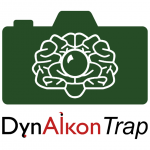FASTCAT-Edge: build your own smart camera trap to record only videos and pictures of wildlife activity and quickly identify the species names.
Service description
FASTCAT (Flexible AI SysTem for CAmera Traps)-Edge allows you to assemble an AI camera trap that:
(1) Automatically filters out most unwanted pictures and video streams, keeping images of animals. This saves you time as you don’t have to delete empty recordings or photos.
(2) The camera trap uses bespoke Artificial Intelligence (AI) to automatically identify whether a scene contains an animal or a human, ie, this allows you to only keep animal scenes.
(3) Eventually, this service will connect with biodiversity citizen observatories. So, if you are a citizen scientist who uses a camera trap, you will be able to easily upload the picture to some platforms such as iSpot, Artportalen or Natusfera.
Development & how it works
This camera trap consists of an architecture that records at all times and uses some AI to decide when the camera trap needs to be triggered. So, it captures the best frames when needed. The system is very innovative because the camera is always on and looking for animals and when the system ‘thinks’ it has spotted an animal, it keeps the image. So, there is little delay from motion being detected to the image being taken, while other camera traps often miss the right frame because it takes too much time for them to react. For example, if there is a lot of motion, that doesn’t mean an animal just passed by; it could have just been leaves falling from a tree. The idea is that this system can tell the difference.
The animal-detection machine-learning model integrated into the camera trap also detects small animals that are sometimes missed with standard commercial camera traps because they need a minimum heat threshold to be triggered. It also is better at detecting fast animals because there is almost no delay from motion being detected to the image being taken.
How can you create your own smart camera trap?
Use the FASTCAT-Edge code and guide to set up your camera trap. This do-it-yourself (DIY) device uses a Raspberry Pi, a single-board computer capable of executing the bespoke capture software and providing the smart functions of FASTCAT, embedded in your device.
Innovation for the camera trap community
- A do-it-yourself (DIY) camera trap, i.e. a camera you can place in a covert location that will automatically record wildlife activity.
- Save time in selecting the images and videos: the camera greatly reduces the amount of unwanted data to store or filter.
- Capture thousands of animal photos and videos, including small or fast animals that are often missed with standard camera traps, because it is recording all the time and uses AI to decide when the trap should be triggered. So, it has already captured the best frames when needed. Other camera traps often miss the right frame because of the time it takes for them to react.
- Design your own observation pipeline around this camera trap, as the camera trap is a general-purpose computer.
- Provides you with counts (number of species recorded or photographed).
- Share your wildlife images with citizen science projects.
Code and guide to build your own smart camera trap:
Watch the video!
Camera trap logo:
Related news:
Coordinator:
Questions & answers
- Will FASTCAT-Edge be able to filter both images and videos?
Yes.
- Can I select which species subsets I want to record? For example, if I’m only interested in recording the images/videos with foxes?
Yes, FASTCAT-Edge is a general-purpose computer so you can design your observation project around this camera trap.
- If I already have a camera trap, can I install FASTCAT-Edge?
It depends whether your camera trap system is open or not. However, you can also use the FASTCAT-Cloud website, which has the same functionalities: it filters out unwanted images/videos and helps you identify the species names.
- Will FASTCAT-Edge be able to detect small and fast animals?
Yes. The animal-detection machine-learning model integrated into the camera trap also detects small animals that are sometimes missed with standard commercial camera traps because they need a minimum heat threshold to be triggered. It also detects fast animals because there is no delay from motion being detected to the image being taken.
- Can the system detect humans?
Yes, the system can detect humans (as an animal class) and they can be removed or counted as such. However, we do not provide recognition of any other features (gender, etc.), just the label ‘human’.
Co-design highlights
Most of the attendees who answered the post-event survey would recommend the co-design session to a friend.
Want to join the co-design community?
Interact and meet other professionals working in your field
You will be able to network with other professionals and projects.
Help boost the functionalities of citizen observatories
For example, improve species identification with artificial intelligence, data integration from various citizen science platforms, etc.
Be an active part of the open science movement
Cos4Cloud's technical services are open source and are intended to be adapted and improved by the community involved.
Learn about citizen science, technology, and co-design
Also, we will tell you how we have applied co-design feedback in developing the service at the end of the project.



















